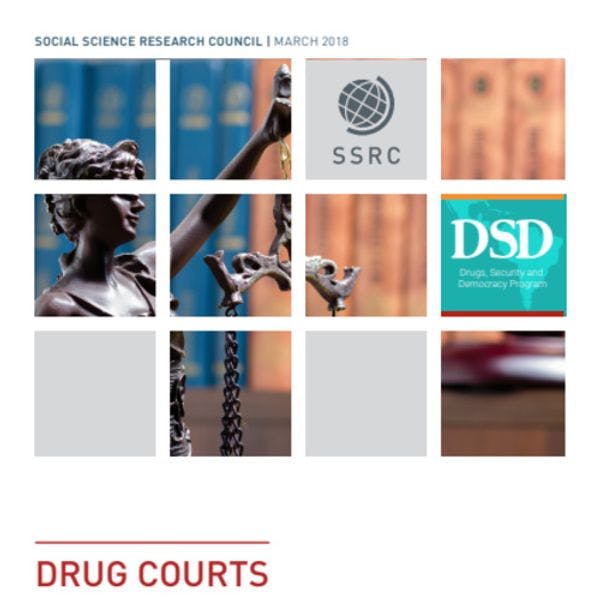Drug courts in the Americas
Drug courts in the United States are presented as an alternative to incarceration for people arrested for minor drug offenses where drug use is considered an underlying cause of the crime, thus theoretically serving as a tool for reducing prison and jail populations. The US has nearly 30 years of experience with these courts, which have spread to all 50 states as well as US territories.
Many countries have looked to the US experience with drug courts as a model to be adopted, and the US government has also promoted them abroad as a potential alternative to incarceration. While the United States drug court model has been embraced by other countries around the world, perhaps the most organized efforts to expand this policy are those currently underway in Latin America and the Caribbean. The considerable influence of the United States in the region’s drug control policies has certainly encouraged many Latin American and Caribbean countries to view drug courts as an alternative to incarceration, and the growing number of countries implementing them signals that these efforts are moving ahead with full force in the region. The Canadian government has also worked to support the expansion of drug courts, particularly in the Caribbean, but this report has not focused on reviewing their drug court model.
Drug court proponents assert that drug courts are cost-effective, reduce recidivism as well as time spent in detention (prison or jail), and offer drug treatment as an alternative to incarceration for people whose drug use fuels their criminal activity. In order to evaluate these assertions, this report reviews key findings from the United States’ experience with drug courts that may be useful to inform debates in other countries about drug courts and other alternatives to incarceration for low-level drug crimes. Although major institutional, legal, and cultural differences exist, the United States’ long experience with drug courts offers an important source of information for countries in Latin America and the Caribbean that have either established, or are looking to establish, drug courts. This report also presents a brief overview of where and how drug courts have been implemented in Latin America and the Caribbean in order to identify, to the extent possible, the different experiences and challenges faced by those countries. One main difficulty in this exercise is the limited availability of data that would allow strong parallels to be drawn. As is the case with the United States, with rare exceptions, drug courts in Latin America and Caribbean are not independently monitored and evaluated, and most have been established relatively recently. Nevertheless, we have found that the information available points to fundamental problems with the implementation of drug courts as an alternative to incarceration, and thus the findings from the United States experience could, at the very least, offer insight about whether and in what circumstances drug courts provide an alternative that is more desirable than incarceration.
The US section is based on review of the existing research on drug courts and treatment for substance use disorders and evaluations of drug court efficacy conducted and published by the US government, major research institutions, advocacy organizations, and leading scholars whose work focuses on drug courts specifically or on criminal justice, substance use disorders, drug treatment, and drug policy more broadly. The Latin America and Caribbean sections are based on a literature review of the available information on drug courts (which is significantly limited when compared to the vast literature available in the United States) and research on criminal justice, incarceration, drug treatment, and drug policy, responses to requests for information, and interviews. Also reviewed for each country were laws, official documents (including memoranda of understanding, government documents and web pages, judiciary reports, PowerPoint presentations made by authorities, and international organization documents, among others), studies and evaluations (when available), and, in a few cases, news reports.
